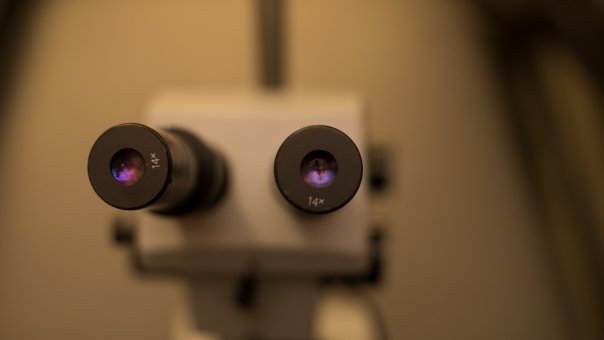Meningitis Day 2015 – diagnosing better outcomes
24 Apr 2017
Written by Rachel Beaton
Definition: Meningitis is inflammation of the meninges, the covering of the brain and spinal cord. It is most often caused by infection, bacterial, viral, or fungal.
In the early hours of 4th Jan 2014 I woke with a bad headache. I suffer from headaches regularly so wasn’t initially concerned, but tried and failed to go back to sleep. I spent the next day in bed or on the sofa – my husband was dispatched to the shops to get more paracetamol and other supplies. By Sunday the 5th of January I could barely think straight as the pain was so intense. I had been sick a few times, was running a fever and couldn’t get my hands and feet warm. A call to NHS24 saw me with an out of hours appointment and after a brief chat with the on duty nurse I was dispatched to the hospital to be seen in the clinical assessment unit.
I was given urine tests, blood tests and a CT scan in quick succession. The blood test results showed elevated levels of white blood cells indicating I was fighting something. There was a suspicion that I had meningitis, so the doctors had already indicated that they wanted to put me on IV antibiotics to be on the safe side; even though the tests hadn’t come back with any conclusions I might have had the bacterial meningitis infection that could have been very dangerous.
Professor Chris Butler, Professor of Primary Care Medicine at Cardiff University and Prize Advisory Panel member for the Longitude Prize says: ‘Bacterial meningitis is mercifully a rare disease in developed countries, but when it strikes, it can lead to severe, lasting health problems and sometimes death – around 170,000 deaths globally every year. Complete recovery is also possible, but bacterial meningitis is one of the top ten causes of death in children younger than 14 years in high income countries. Making an early, correct diagnosis is crucial: every hour that the condition goes untreated or inadequately treated diminishes the chances of a full recovery.
Meningitis poses a difficult problem for doctors. If a patient is displaying the symptoms of meningitis then there is a race to find out if they have a virus or a bacterial infection – meningitis can be caused by both. The difficulty is that the disease caused by the bacteria can be far more dangerous than the viral strain and needs rapid attention from doctors to prevent a potentially fatal case, so it’s vital to find which type of infection a patient has as quickly as possible. Even with prompt diagnosis and treatment, approximately 10% of patients die and up to 20% or more sustain permanent damage and disability.’

Three long days later my test results came back from the hospital where the samples had been sent for testing, showing the presence of a virus. The antibiotics and steroids were immediately stopped and my discharge paperwork was drawn up. I was given a prescription for paracetamol, and a further call ruled out a bacterial infection. It had taken four days in total to get my results, partly because samples needed to be sent to a different hospital, but the emotional effect of the illness lasted a little longer. Until I became ill I was breastfeeding my daughter at least three times a day and that had to stop immediately. Also, I wasn’t able to see her on her first birthday. If it had been bacterial meningitis they would have started treating those in close contact with me, whether they showed symptoms or not, with 7-21 days of antibiotics.
Meningitis is a serious illness and once I was taken off the IV I felt appalling. If there had been a test that told the doctors in a matter of minutes that I had viral rather than bacterial meningitis I would not have been hooked up to an IV for four days taking up a bed at a time where they were in very short supply. I would have much rather been on the sofa watching my daughter open her first birthday presents than watching nurses put on protective gowns and gloves to enter the room and take my temperature.
Professor Chris Butler says: ‘Even once meningitis is considered, treatment is often based on the best guess. Sometimes antimicrobials that cover a wide range of possible infecting organisms are used, or doctors are able to target antimicrobial treatment according to the clinical picture or test results. The more specific the antimicrobial is the susceptibility of the pathogen, the better it is for the patient and for health care. More rapid diagnostics could transform what is sometimes an initial blunderbuss approach to something much more precise and as effective, but with fewer unwanted effects.’
A simple and quick test for telling between viral and bacterial infection would have saved me distress and time spent away from my family, but there are wider implications on the healthcare system. Meningitis is a potentially life-threatening disease that poses a question Longitude Prize is trying to answer: how can we quickly tell between bacterial and viral infections? I am hopeful that whoever solves Longitude Prize will manage to help others avoid the same distress I did, save lives and reduce burden on healthcare services across the world.
